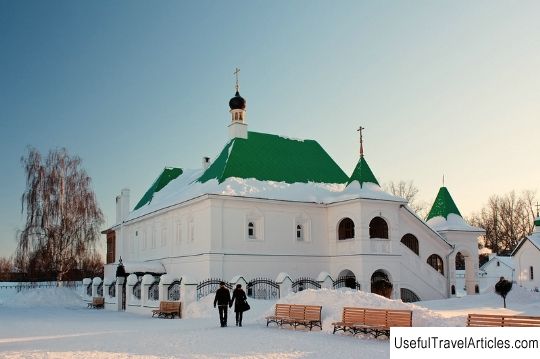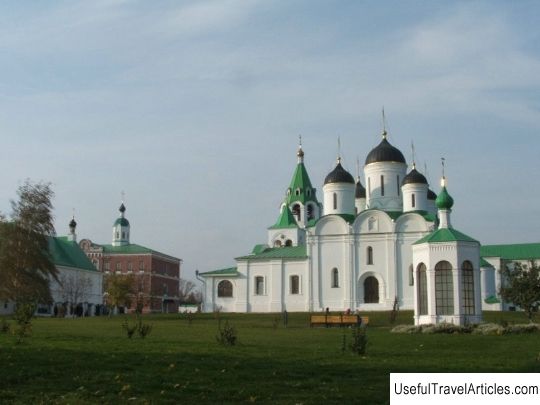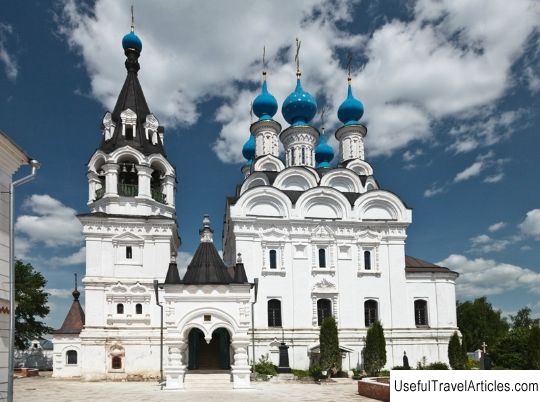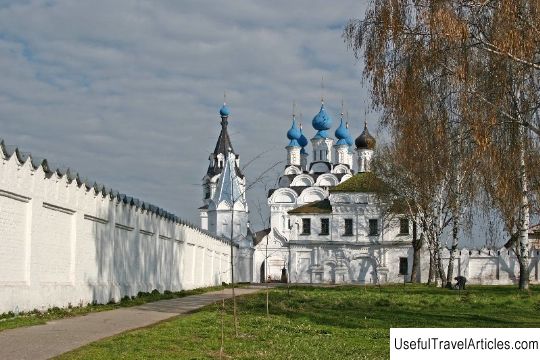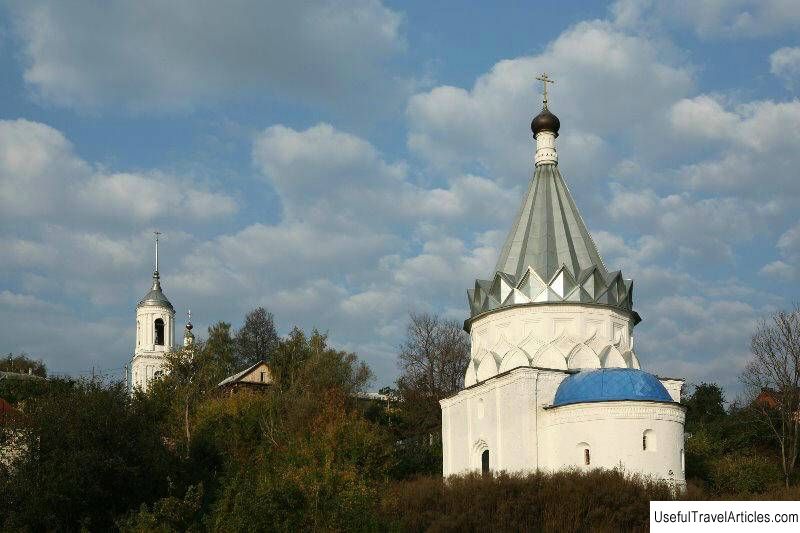Savior Cathedral of the Transfiguration Monastery description and photos - Russia - Golden Ring: Murom
Rating: 8,2/10 (899 votes) 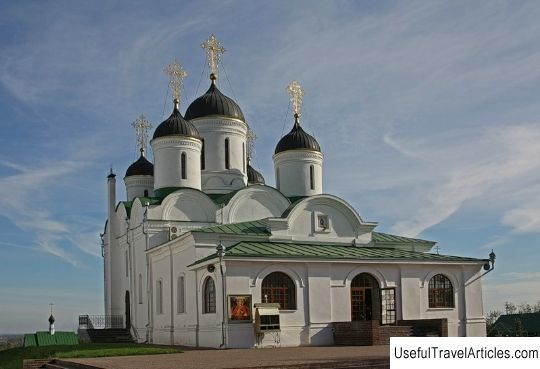
Spassky Cathedral of the Transfiguration Monastery description and photos - Russia - Golden Ring: Murom. Detailed information about the attraction. Description, photos and a map showing the nearest significant objects. Photo and descriptionThe Savior Cathedral of the Transfiguration Monastery appeared here as a fulfillment of a promise made by Ivan the Terrible before the campaign against Kazan in 1552. Praying in the monasteries of Murom and worshiping the Murom shrines, he vowed to build stone temples in Murom in the event of victory. Ivan the Terrible fulfilled this promise and one of the churches erected on his order was the Transfiguration Cathedral in the Spassky Monastery. The rest of the architectural ensemble of the monastery was created around the main cathedral church. For many centuries, the appearance of the temple and the monastery as a whole was constantly changing - something was dismantled, something was rebuilt, something was rebuilt. At the beginning of the 21st century, after a period of desolation, which literally did not lead to the destruction of the monastery, this process received a new development. The exact date of the construction of the Transfiguration Cathedral is unknown, but it is known for certain that the temple already existed in the 1560s. According to many historians, the construction of the cathedral dates back to 1554. This is due to the fact that it was at this time that the Tsar donated the Kudrinskaya Sloboda to the Transfiguration Monastery, and it is possible that the new patrimony was a gift from the Tsar for such a significant event as the completion of the construction of the first stone church in the monastery. The Transfiguration Cathedral, simultaneously with the fact of its construction at the expense of the sovereign, is noted in the Scribe Murom books, which were compiled in 1624 by Grigory Kirievsky and in 1637 by Boris Bartenev. The Transfiguration Cathedral, which has survived to our time almost unchanged (if you do not take into account the late extensions) - it is not quite square in plan (by an unfortunate mistake made by the builders of the temple, one side is smaller than the others), one-story, three-apse, four-pillar, five-dome. Initially, its domes had a helmet-like shape, but during the reconstruction they were replaced with bulbous ones; during the last restoration they were returned to their helmet shape. Separate, archaic for the 16th century architectural features (for example, an unusually high central drum with a height almost equal to the height of the quadrangle and high supporting arches) make it possible to assume that the temple was erected not by Moscow, but by Rostov masters. In 1839, the area of the cathedral was expanded by adding a refectory and a covered wide porch to it on the west side. In 1880, the cathedral was badly dilapidated and in 1882 the Vladimir spiritual consistory forbade worshiping in it. They were renewed after the completion of major repairs. Even more extensive repair and restoration work was carried out after the return of the monastery buildings to the Orthodox Church in 1996.         We also recommend reading Mannerheimin Salonkivaunu description and photos - Finland: Mikkeli Topic: Savior Cathedral of the Transfiguration Monastery description and photos - Russia - Golden Ring: Murom. |
